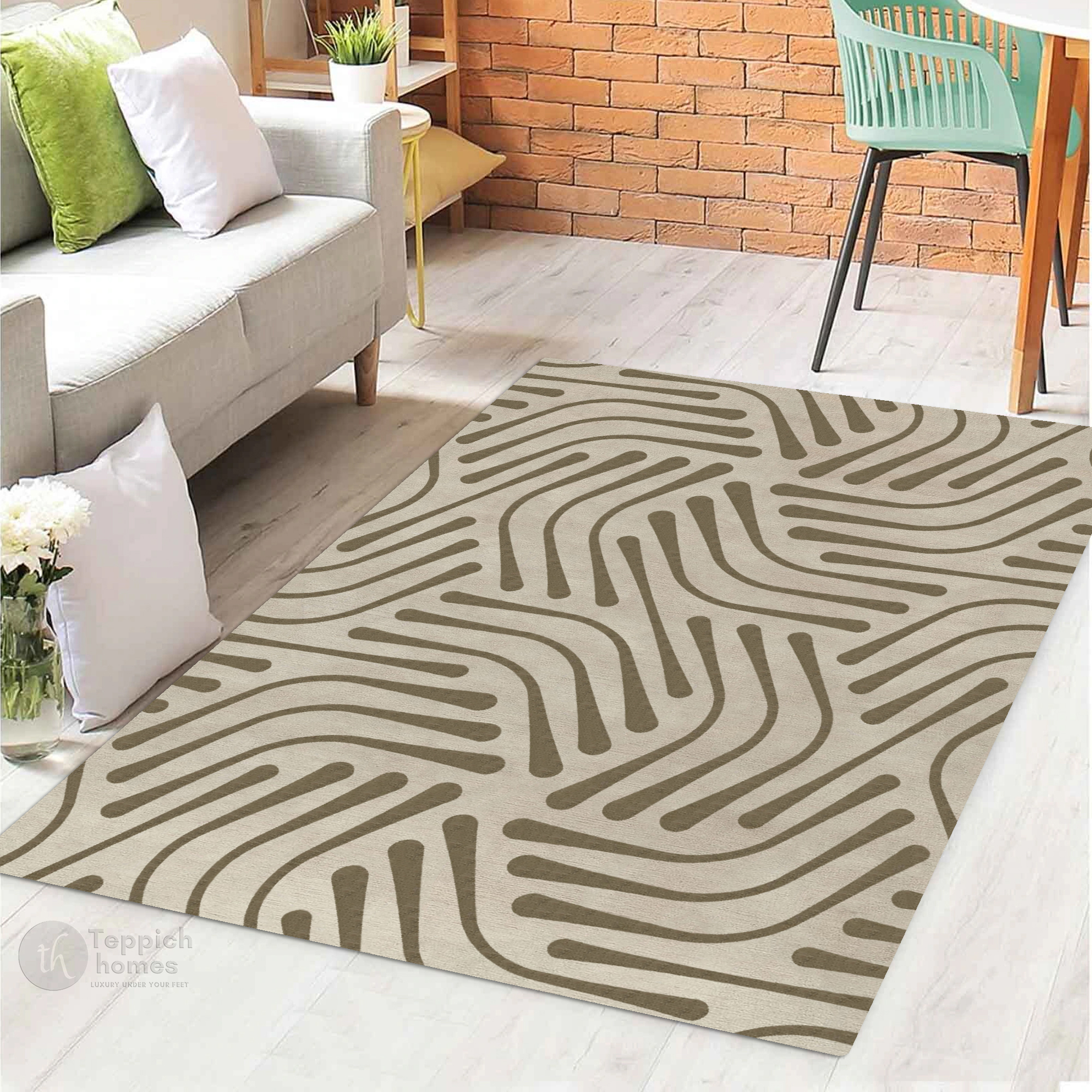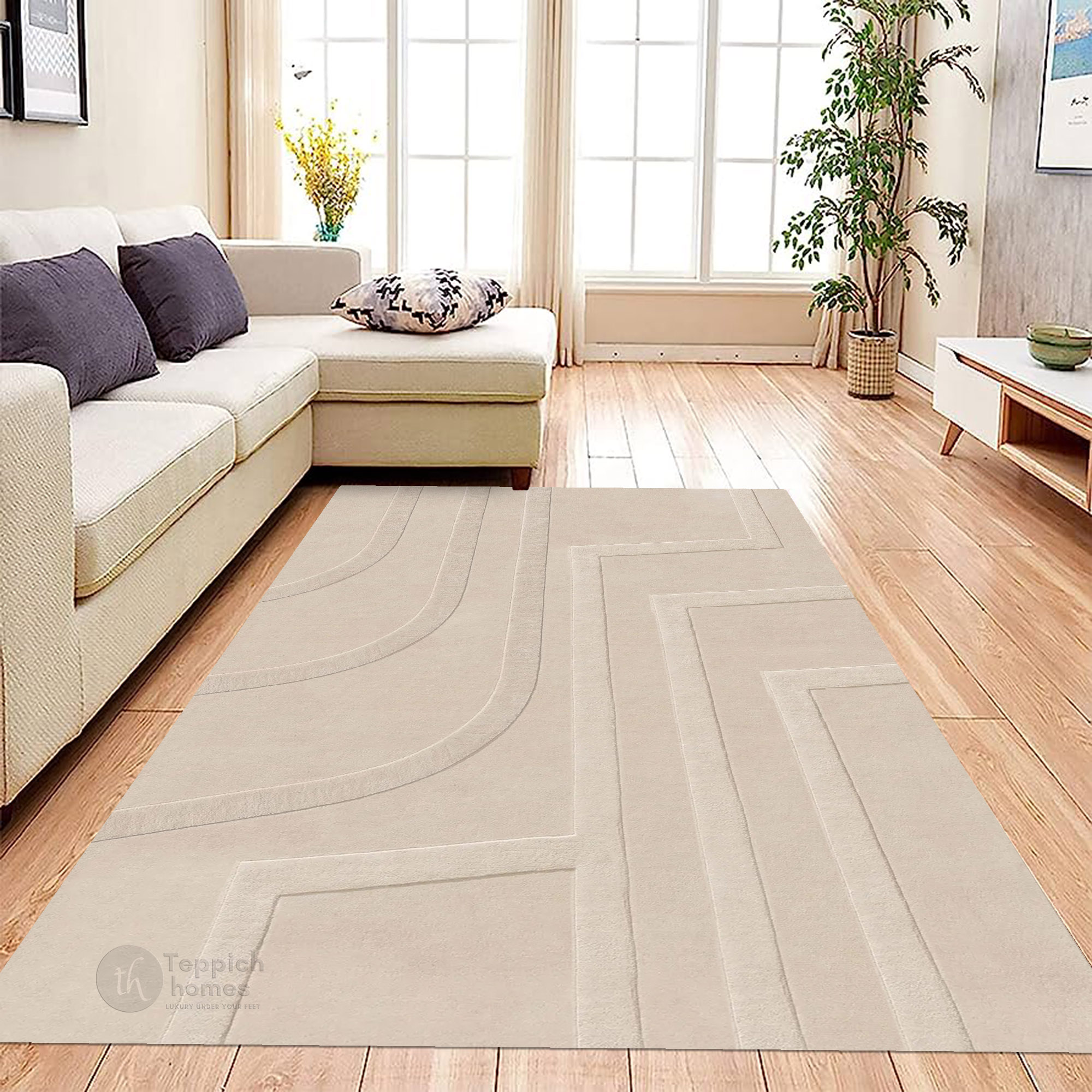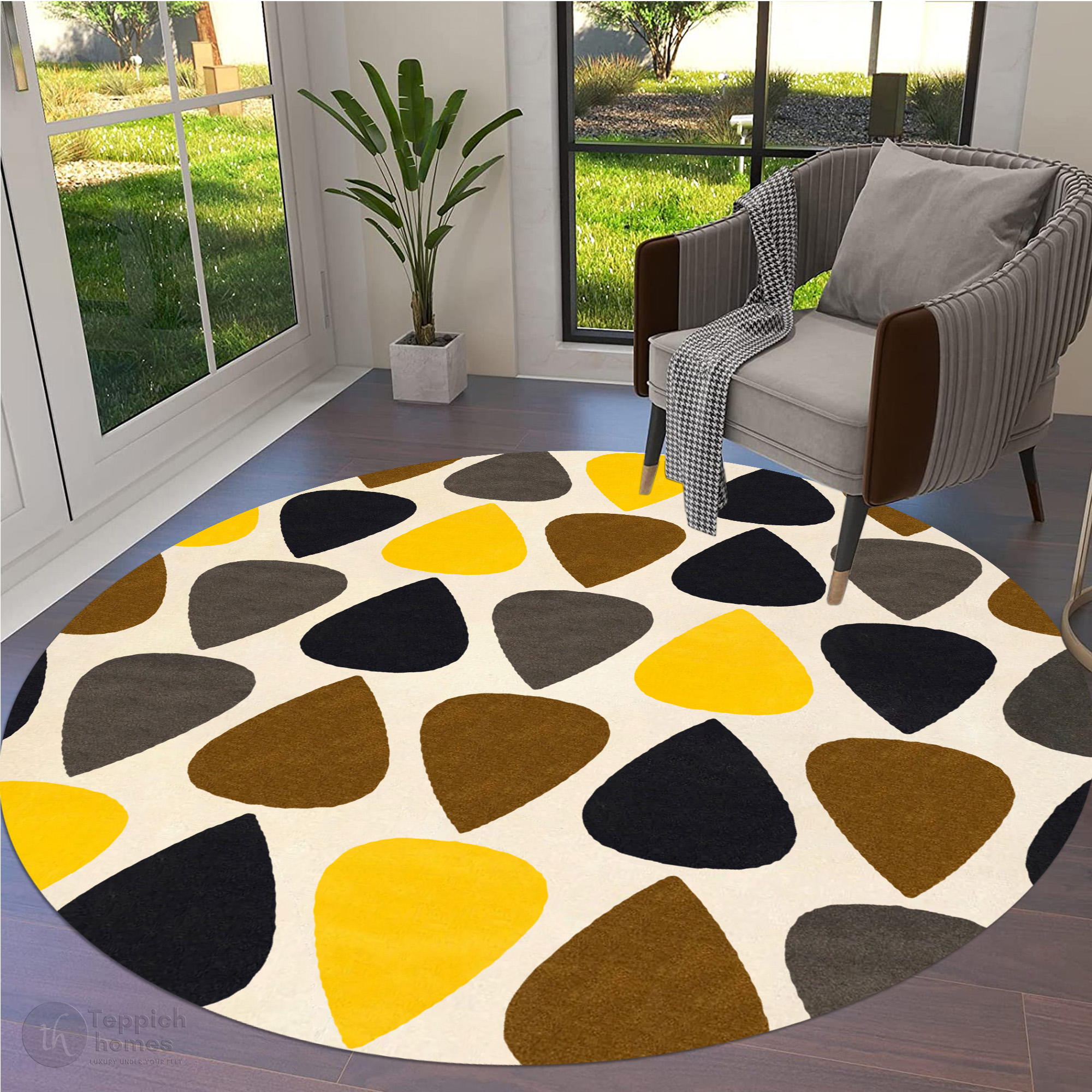In the ever-evolving world of interior design, the interplay between minimalism and maximalism offers a captivating canvas for creativity. Imagine a serene, understated rug anchoring a space adorned with vibrant artwork and eclectic furnishings; this juxtaposition not only highlights the beauty of each element but also invites a dialogue between simplicity and exuberance. As we explore the art of layering quiet rugs with bold décor, you will discover how to strike that delicate balance transforming your living environment into a harmonious sanctuary that reflects your unique style.
This journey into design will equip you with insights on selecting the right materials and patterns for your rugs, understanding color theory in relation to loud décor, and mastering practical techniques to achieve an effortlessly layered look. Whether you're an ardent minimalist or a devoted maximalist or perhaps somewhere delightfully in between, this guide will empower you to curate spaces that resonate with both tranquility and vibrancy. Let’s embark on this exploration together, where every choice is an opportunity for expression and every layer tells a story.
Understanding Minimalism and Maximalism in Home Décor
In the world of home décor, minimalism and maximalism represent two distinct yet equally captivating design philosophies, each offering a unique perspective on how to shape and personalize a living space. Minimalism champions the idea of "less is more," favoring simplicity, clean lines, and a restrained color palette often dominated by soft neutrals, whites, and muted tones. This aesthetic places a strong emphasis on functionality and open space, where every element has a clear purpose. By eliminating clutter and visual noise, minimalist interiors evoke a sense of calm and serenity creating an environment where the mind can rest, and where each carefully chosen piece stands as a statement of quiet elegance. In contrast, maximalism thrives on bold self-expression and the freedom to layer patterns, colors, and textures without restraint. It is a celebration of abundance and individuality embracing vivid hues, richly detailed prints, and a diverse mix of cultural and artistic influences. Where minimalism edits, maximalism curates. It invites homeowners to tell their story through design, encouraging the use of sentimental objects, vintage finds, and daring combinations that reflect personality and passion.

Explore➡ Contemporary Curved Pattern Bedroom Rug
Every room becomes a canvas for creativity, with visual richness that often evokes a sense of warmth, vibrancy, and lived-in charm. Understanding these two aesthetics becomes especially vital when it comes to layering rugs in spaces with loud décor. A well-chosen rug can either ground a room or amplify its character, depending on how it's integrated. In minimalist settings, a subtle, understated rug with gentle textures or a monochromatic palette can complement the openness of the space, offering warmth without overwhelming its simplicity. On the other hand, in a maximalist interior, rugs can act as a dynamic focal point either by reinforcing the room’s boldness through striking patterns and vibrant colors or by offering visual relief through more neutral tones that balance the surrounding intensity. Mastering the interplay between these styles allows for greater design flexibility. For instance, introducing a minimalist rug into a maximalist room can provide necessary contrast, enhancing the richness of surrounding elements without adding chaos. Likewise, a maximalist rug layered in a minimalist setting can inject personality and dimension, making the space feel less sterile and more inviting.
This cross-style blending fosters a harmonious tension where minimalism brings clarity and structure, while maximalism contributes depth and flair. Ultimately, whether you lean toward the serene discipline of minimalism, the expressive freedom of maximalism, or delight in blending elements of both, recognizing the nuances of each approach empowers you to make intentional, thoughtful design choices. Even seemingly minor additions like a strategically chosen rug can transform a space, proving the principle of
Small Rug, Big Impact. It’s this understanding that enables you to create interiors that not only look beautiful but also feel deeply personal, cohesive, and inspiring—a true reflection of your unique aesthetic journey.
Choosing the Right Rugs: Materials and Patterns
When it comes to selecting the right rugs for a space that features bold décor, every design choice becomes a matter of balance especially when aiming to blend the richness of maximalism with the restraint of minimalism. One of the most important decisions lies in the selection of materials and patterns, as these elements significantly influence the visual and tactile experience of the room. Opting for natural fibers like wool, jute, or cotton is a wise and stylish starting point. These materials not only offer durability and comfort underfoot but also provide a sense of earthy grounding a much-needed counterpoint to vibrant furniture, statement art, or saturated walls. For example, a handwoven jute rug can introduce an organic, rustic texture that contrasts beautifully with sleek, modern lines or colorful, eclectic pieces. Wool, with its plush feel and inherent warmth, can soften the mood in a room filled with metallic or high-gloss finishes, adding comfort without compromising the space’s energy. Cotton rugs, especially in flat-weave constructions, offer a light, breathable option that’s easy to maintain and well-suited for high-traffic areas in expressive homes. When working with loud décor, color and pattern choice are equally critical. Instead of competing with bold elements, consider rugs in solid tones or subtly woven patterns that enhance the surrounding aesthetic. Think muted stripes, quiet gradients, or soft geometric prints patterns that offer visual interest without overwhelming the eye.
These understated designs act as visual buffers, allowing vibrant furnishings and accents to take center stage while still contributing their own layer of depth and style. However, this doesn’t mean patterned rugs should be entirely avoided. In fact, they can be a powerful tool for creating a cohesive and sophisticated look if chosen with intention . If your space already features an array of bold art or colorful furniture, select rugs with delicate or faded motifs that echo the tones and forms already present. For instance, a soft-toned Persian or vintage-style rug can add historical character and visual warmth without stealing the spotlight. By mirroring a few key hues or shapes from your décor, these rugs act as a subtle bridge that ties everything together, rather than introducing competing elements. Another smart tactic is to layer smaller rugs over larger neutral bases. A large jute or wool rug can anchor the room, while a smaller patterned piece layered on top adds personality without overwhelming the entire space. This technique allows flexibility, encouraging you to experiment with different styles and arrangements that reflect your personal taste. Ultimately, the goal is to create layers that tell a unified and intentional story.

Rugs should not exist in isolation but as part of a larger conversation with the furniture, lighting, wall treatments, and décor accents. Each component should support the room’s overall vibe whether that’s energetic and playful, grounded and serene, or a thoughtful mix of both. By mindfully selecting rugs that balance material richness with pattern restraint, you set the stage for a space that feels not only curated and dynamic but also welcoming and livable. It's in this delicate equilibrium that minimalism and maximalism meet, harmonizing function and flair in perfect style.
Balancing Act: How to Layer Rugs with Bold Décor
Layering rugs in a space filled with bold décor may seem like walking a tightrope, but when done with intention and creativity, it can result in a dynamic, visually engaging environment that reflects both your personality and design sensibility. The key to success lies in striking a harmonious balance where the quieter, grounding presence of rugs complements and elevates the louder, more expressive elements in the room. Begin by choosing a foundation rug in a neutral tone or with a subtle pattern. This foundational layer should act as a visual anchor, toning down the energy of the bolder features while providing a cohesive base for the overall aesthetic. Soft hues like beige, ivory, muted gray, or even warm taupe work particularly well, as they blend effortlessly with most design styles and color palettes. A rug in these tones can serve as a calming backdrop against bold wallpaper, colorful upholstery, or a dramatic gallery wall, ensuring that no single element visually overpowers the rest of the space. Once your base is set, introduce a secondary rug for layering; this is where you can play with dimension, contrast, and materiality.
A flatweave jute rug layered over a plush wool base creates not only a beautiful interplay of textures but also adds depth and tactile richness to the space. This layered approach can lend a curated, collected feel that makes your room feel more intentional and lived-in. If your space leans into maximalist expression, you might choose a patterned top rug with soft echoes of your bolder décor palette like a faded medallion print that references the color of nearby artwork or furniture. The aim is to weave subtle connections throughout the room rather than direct repetition, which can feel too rigid or forced. Texture is just as important as color and pattern. A blend of different rug materials such as a chunky knit wool paired with a smooth cotton flatweave adds both visual complexity and tactile variation. These combinations invite interaction and movement, creating a sensory experience that goes beyond aesthetics. Texture layering also provides a practical benefit: added comfort, warmth, and even sound absorption, especially in open-concept spaces. Placement matters, too. When layering rugs, think strategically about their positioning. You don’t always need to center them perfectly; a slightly off-center placement can create natural flow and asymmetry, leading the eye across the room and enhancing the sense of depth. Aim for overlaps that look intentional rather than haphazard perhaps letting one corner peek out beneath a coffee table or extending a jute rug beneath the legs of a statement armchair.
These thoughtful placements help build visual pathways, subtly guiding guests through the space and reinforcing the design logic of the room. Scale is another critical consideration. Bold furniture pieces like an oversized velvet sofa or a sculptural coffee table require larger rugs to avoid visual imbalance. A too-small rug can make even the most stunning room feel disjointed or underwhelming. On the flip side, oversized rugs can unify disparate elements and prevent the room from feeling fragmented. If you're layering, ensure both rugs are proportionate to each other and to the furniture they interact with. Ultimately, the art of layering rugs in bold spaces is about embracing contrast with control. It’s a dance between soft and strong, subtle and striking, minimal and expressive. By thoughtfully combining textures, tones, and scales and ensuring each piece plays a supporting role in your broader décor narrative you’ll craft a room that feels cohesive yet characterful.
How to Pick the Right Rug to Pull Your Living Room Together becomes not just a style choice but a strategic design move. Far from being a clash of styles, the interaction between quiet rugs and loud décor can tell a compelling, personal story—one that transforms your home into a true reflection of who you are.

Color Theory: Complementing Loud Décor with Subtle Rugs
When it comes to layering rugs with bold décor, understanding color theory is essential for creating a harmonious space. Subtle rugs can serve as a grounding element, allowing the vibrant colors and intricate patterns of your maximalist pieces to shine without overwhelming the senses. Think about using neutral tones or soft pastels that echo the hues found in your loud décor. For instance, if you have a striking piece of artwork featuring deep blues and fiery reds, consider a light beige or muted gray rug that can tie those colors together while providing a calm backdrop.
Additionally, don’t shy away from textures when selecting your subtle rugs. A plush, textured rug in a soft color can add depth and interest without competing with bold statement pieces. Layering these elements thoughtfully not only enhances the visual appeal but also creates an inviting atmosphere where each component has its own voice. Remember, the goal is to create balance and allow your loud décor to be the star of the show while your chosen rugs provide a supportive stage that complements rather than competes with their vibrancy.
Practical Tips for Achieving the Perfect Layered Look
When it comes to layering rugs with bold décor, a few practical tips can help you achieve that perfect balance without overwhelming your space. First, consider the scale of both your rugs and your décor. If you have a large, eye-catching piece of furniture or artwork, opt for a larger rug that can anchor the room while allowing the bold elements to shine. Conversely, if your décor is more intricate or busy, choose simpler rugs in terms of pattern and color to provide a grounding effect. This way, each element has its moment without competing for attention.
Another essential tip is to play with texture and shape. Layering different textures like a plush shag rug over a flat-weave one adds depth and interest while keeping the overall look cohesive. Don't shy away from mixing shapes either; combining round and rectangular rugs can create visual intrigue that enhances the layered effect. Lastly, remember to maintain some consistency in color tones across your rugs and décor. Even if your décor is loud, pulling out subtle hues from those pieces into your rug choices will create harmony throughout the space. By thoughtfully considering these elements, you'll be well on your way to achieving an effortlessly stylish layered look that feels both inviting and dynamic.
Conclusion
The art of layering quiet rugs with bold décor is a delicate dance that invites creativity and personal expression into your living space. By understanding the principles of minimalism and maximalism, selecting the right materials and patterns, and employing thoughtful color theory, you can create a harmonious environment that reflects both sophistication and vibrancy. Remember, achieving this balance requires not just an eye for design but also an appreciation for how each element interacts within the broader context of your home. As you embark on this journey of transformation, let your instincts guide you; after all, your space should be a true reflection of who you are an exquisite blend of calm and exuberance that tells your unique story.



